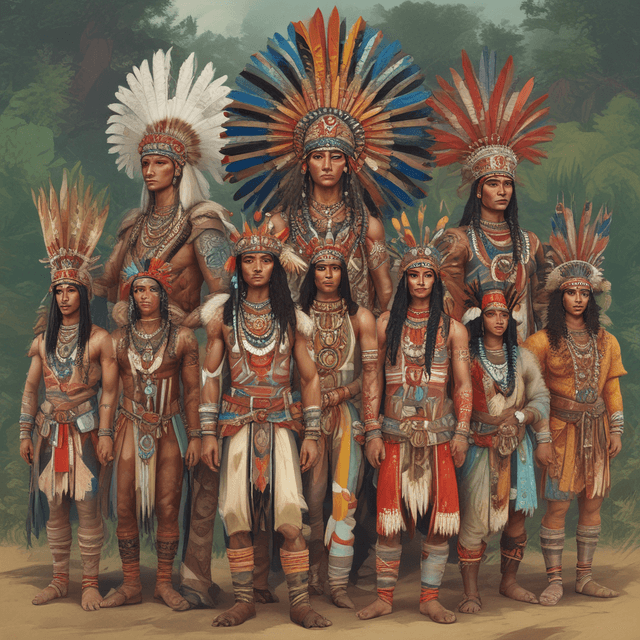
| Premise | Indigenous populations in the Americas have maintained strong cultural presence and political influence, with greater autonomy and control over their traditional lands and resources compared to the real world. |
| Significance | Indigenous groups play a central role in this alternate timeline, with their cultures, traditions, and political influence deeply embedded in the development of the Americas. |
| Regions Covered | Canada • United States • Central America |
| Key Contributions | Shaping the societies and economies of countries • Contributing unique histories, worldviews, and ways of life |
The indigenous peoples of the Americas are the descendants of the original inhabitants of the Western Hemisphere, with highly diverse cultures, languages, and ways of life that predate the arrival of European colonizers. In this alternate timeline, these indigenous groups have retained a much more prominent and influential role in the political, economic, and cultural landscape of the Americas compared to our own reality.
The indigenous populations of the Americas encompass hundreds of distinct ethnic groups, speaking thousands of languages from numerous language families. Some of the largest and most influential indigenous nations and confederacies include the Iroquois in northeastern North America, the Maya, Aztec, and Inca in Mesoamerica and the Andes, the Lakota, Navajo, and Cherokee in the United States, and the Inuit, First Nations, and Métis in Canada.
These groups have rich histories, complex social and political structures, and deep connections to the land and natural environment that sustained them for millennia before European contact. Their diverse worldviews, belief systems, languages, and cultural practices have left an indelible mark on the countries and regions they inhabit.
The history of indigenous peoples in the Americas is marked by both resilience and trauma. Prior to European colonization, many indigenous nations and empires flourished, engaging in extensive trade networks, sophisticated agricultural practices, and advanced urban civilizations. However, the arrival of European explorers and settlers in the 15th-18th centuries devastated indigenous populations through the introduction of disease, violent conflict, displacement, and cultural suppression.
Despite these hardships, indigenous groups across the Americas mounted resistance movements, negotiated treaties, and fought to maintain their autonomy and ways of life. In the 19th and 20th centuries, indigenous activism, legal battles, and political organizing led to increased recognition of their rights and the establishment of reservations, self-governing territories, and political autonomy in many countries.
The political and legal status of indigenous peoples in this alternate timeline is significantly more robust compared to the real world. Many countries in the Americas have enshrined indigenous rights and self-determination in their constitutions and legal frameworks, granting these groups greater control over their lands, resources, and internal affairs.
For example, in Canada, the Inuit, First Nations, and Métis peoples have secured extensive land claims, co-management of natural resources, and the right to self-governance in their traditional territories. Similarly, countries like Penduras, New Netherland, and the United States have recognized the sovereignty of indigenous nations and strengthened their political representation at the national level.
The cultural influence and contributions of indigenous peoples in this alternate timeline are pervasive and celebrated. Their artistic traditions, language, knowledge systems, and spiritual practices have been deeply integrated into the mainstream societies of the Americas. Indigenous peoples are recognized as stewards of the environment, with their traditional ecological knowledge informing sustainable resource management and environmental protection policies.
Indigenous leaders, activists, and scholars have also played central roles in shaping the political, economic, and social trajectories of their respective countries. Prominent figures like the Iroquois leader Hiawatha, Aztec emperor Montezuma II, and Métis activist Louis Riel are revered national icons, with their legacies continuing to inspire indigenous movements and shape public discourse.
In this alternate timeline, the indigenous peoples of the Americas have maintained a far more prominent and influential role compared to our own reality. Their diverse cultures, languages, and ways of life have been integrated into the social fabric of the countries they inhabit, with greater political autonomy, legal recognition, and control over their traditional lands and resources. The resilience, contributions, and continued relevance of indigenous populations across the Americas have profoundly shaped the development of this alternate universe.